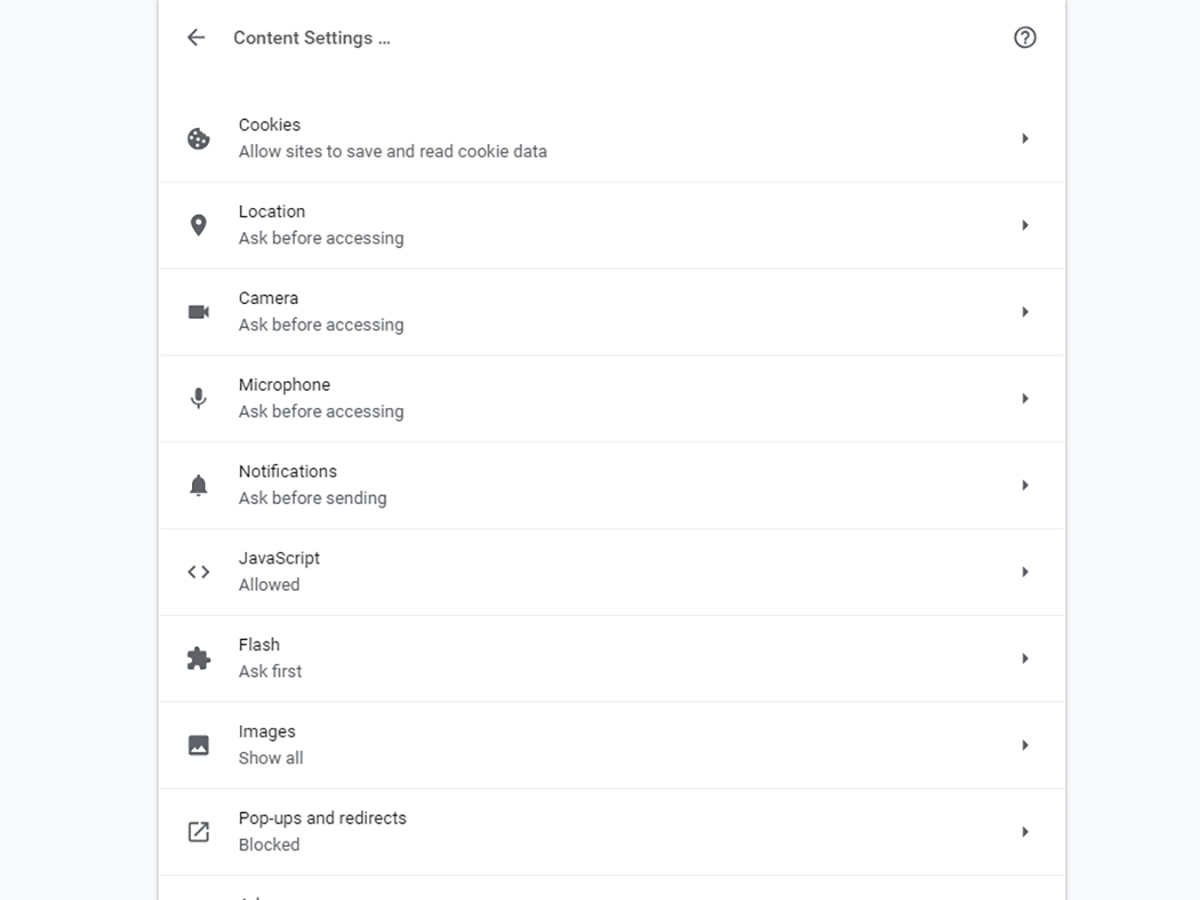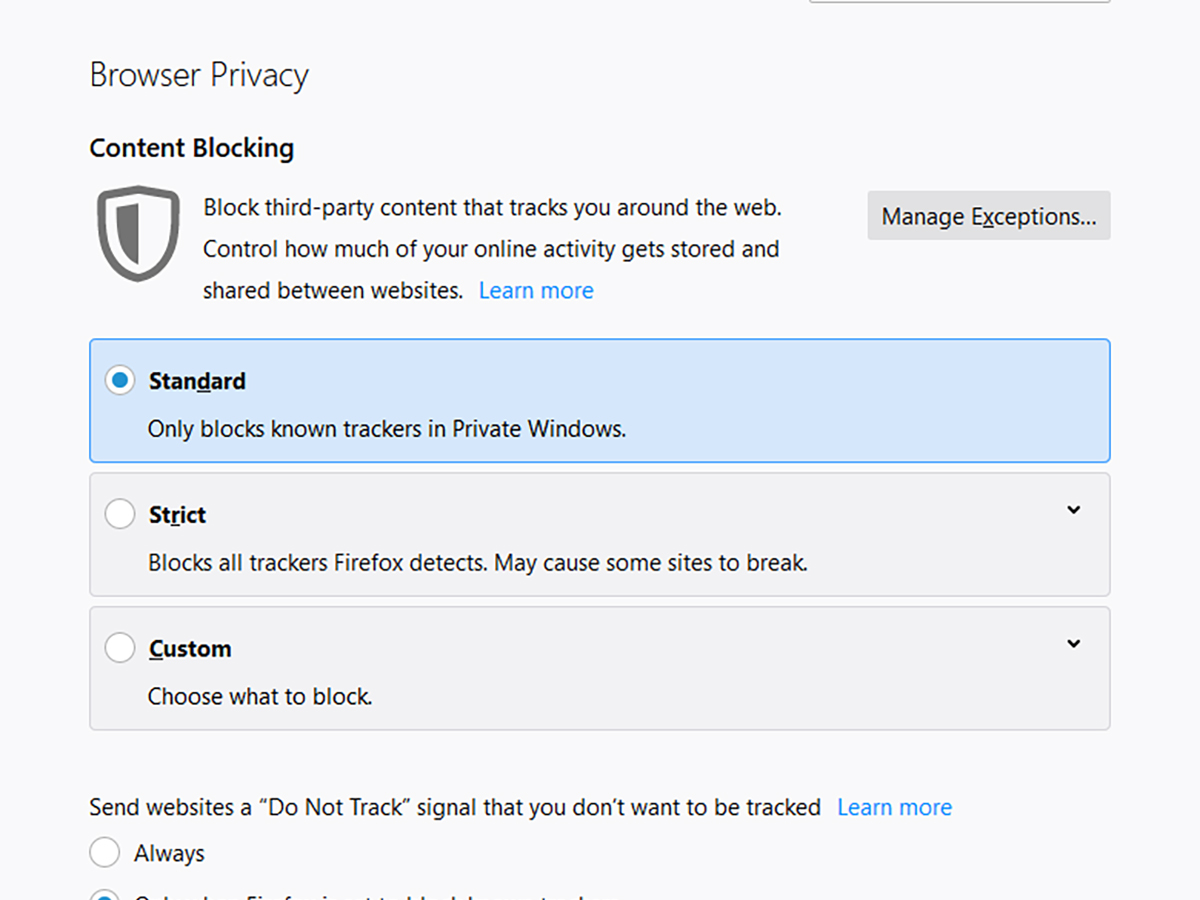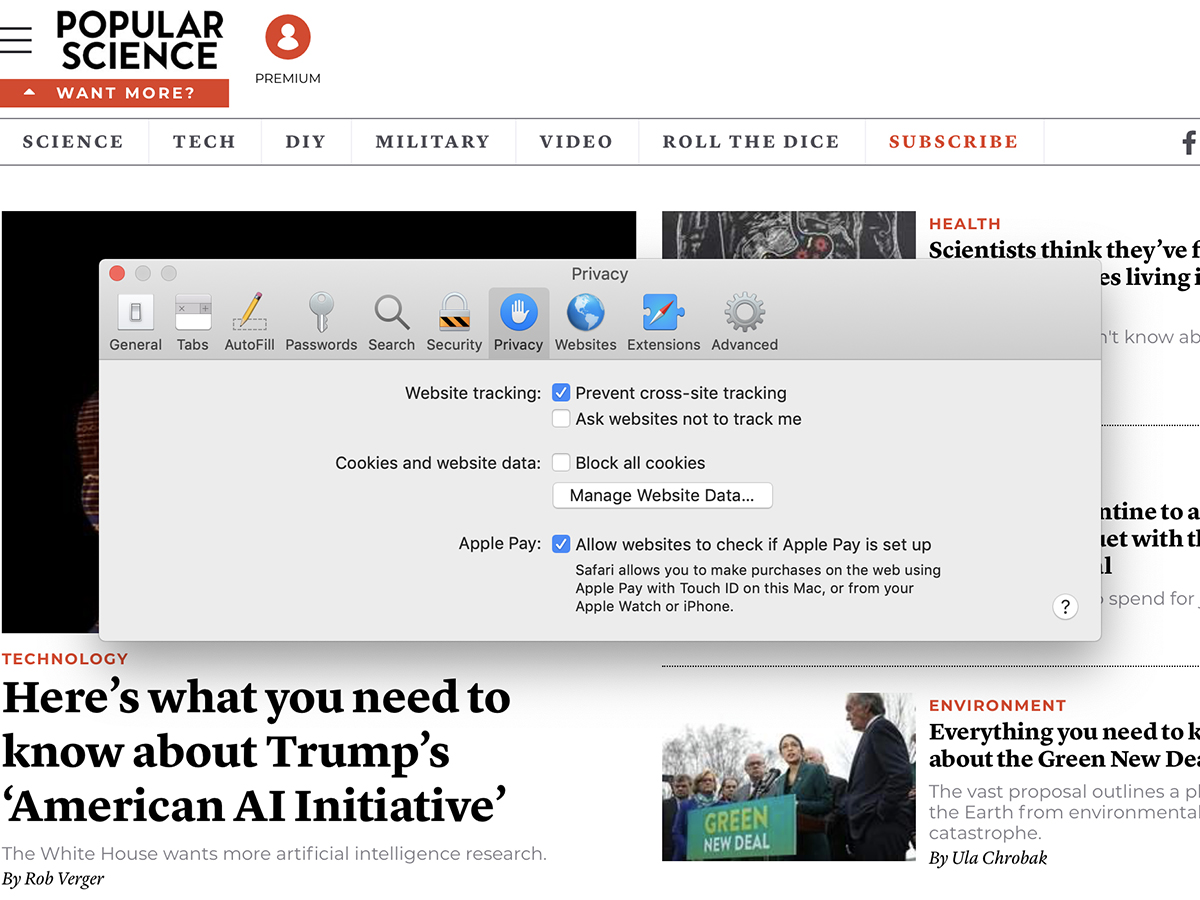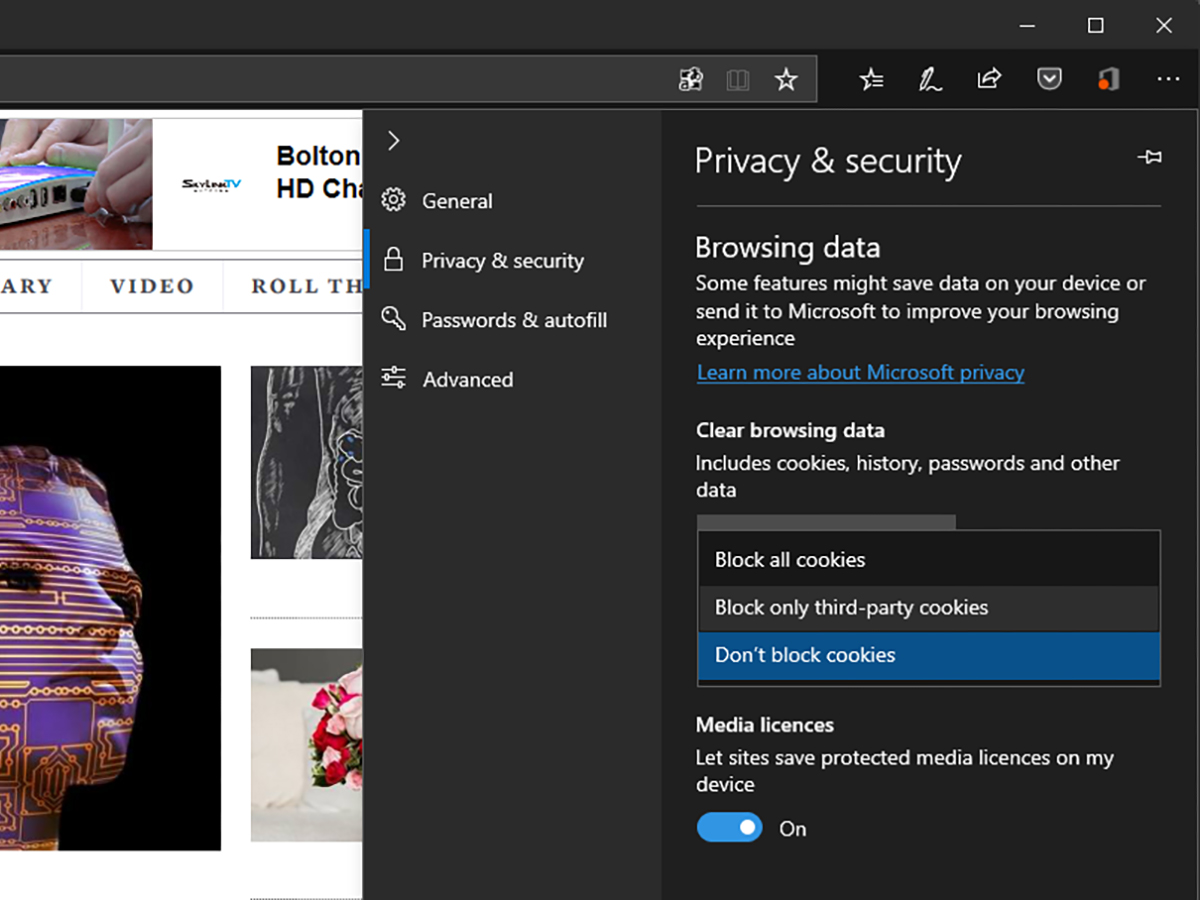

This story has been updated. It was originally published on Feb. 17, 2019.
We all want to stay safe and keep our data private while we’re online. Luckily, many modern browsers have a suite of tools to help, though they don’t always do the best job promoting their built-in privacy features.
Here we’re going to put that right. We’ll explain all the key privacy controls in Google Chrome, Mozilla Firefox, Apple’s Safari, and Microsoft Edge, and clarify how to limit how much of your data companies see.
We’re going to skip over the “do not track” setting you’ll see in your browser. This tells the websites you visit that you don’t want your browsing history logged, but sites largely ignore it, and it’s likely to be removed in the near future.
How to limit tracking on Google Chrome

In Chrome’s settings, click the menu button (three dots, top right corner) and choose Settings. Click Privacy and Security and then Cookies and other site data. Click on Allow all cookies to allow sites to save and read cookie data.
Cookies are bits of text and code that websites leave on your computer, and they help sites remember your location when you’ve provided it, or keep track of stuff you’ve already added to a shopping basket.
You can browse the web without cookies, but you’ll have to log into sites and reconfigure your settings each time you visit them.
Most people accept the convenience-for-privacy trade-off. Still, cookies aren’t hugely worrying from a privacy standpoint, as individual sites and web apps can’t see cookies left by other sites and web apps.
That is until we get to third-party cookies. These are more advanced cookies that advertising networks use to track you across multiple sites. Because ads use different code to embed themselves into sites, they can build up a profile of your browsing history as you make your way across the web.
If you want to stop this from happening, stay on the Cookies and other site data menu and click the bubble next to Block third-party cookies. You can also block or allow cookies from specific sites, as well as clear cookies from specific sites as soon as you close your browser (this happens by default for incognito browsing). To do this, click on See all cookies and site data and find the sites you no longer want to track you. You can click on the arrow to the right to see the cookies the site left on your browser, or the trash can to delete them.
[Related: 5 Google Chrome tips that will level up your browsing]
Back on the Privacy and Security screen, choose Site settings to control what websites and web apps can access your location, webcam, microphone, clipboard, and attached USB devices.
Of course, Google is interested in collecting a lot more data about you as you browse the web (more so than Mozilla, Apple, or Microsoft) and it’s worth remembering that even with protection enabled in your browser, your internet activity can still be logged when you’re signed into sites like Google Maps and YouTube.
The privacy controls for controlling what Google records about your activities aren’t available in Chrome, so we won’t dive into them here, but you can find them in your Google account—get more details on these and how to configure them here.
How to limit tracking on Mozilla Firefox

Fire up Firefox and you’ll find the privacy controls by clicking on the three parallel lines right next to the navigation bar and choosing Settings. Once you’re there, go to Privacy & Security.
The first screen you’ll see is Browser privacy—here, you’ll be able to choose three levels of privacy protection from your browser. Choose Standard to block third-party cookies (the ones that track you across the internet) from most sites in Private mode; Strict, to block them from all sites whether you’re in Private mode or not; and Custom to set these options more specifically.
Firefox consults a public list of known tracking cookies to try to keep your browsing private without breaking the functionality of sites and web apps. Farther down the page, you can check the box next to Delete cookies and site data when Firefox is closed to wipe the browser of any crumbs any time you hit that X button in the corner of your screen.
On that same screen, you’ll find the permissions for your computer’s location, camera, microphone, and so on. These options are specific to each site, and each one will ask for permissions the first time they need them via a pop-up window. Click Settings next to each item to revoke or allow permissions for each site, or hit Remove all websites to revoke access to all of them in one fell swoop.
Below that menu, you can set the types of data that Firefox can collect, including data about the extensions you have installed and technical details about how the browser is performing.
How to limit tracking on Apple’s Safari

To get to the privacy controls for Apple Safari, open the Safari menu from the bar at the top of your screen, then choose Preferences and Privacy. You’ll see cross-site tracking—or third-party cookies—is disabled by default.
Below that cross-site tracking option is an option labeled Block all cookies. As with the other browsers, you can choose to block all kinds of cookies if you don’t mind the inconvenience of having to repeatedly log in and set your site preferences.
[Related: 23 useful Mac settings hiding in plain sight]
Click on Manage Website Data to see the cookies that sites have already logged with Safari and to delete that data if you want to. The final option lets you allow websites to check whether Apple Pay is set up on your computer—another choice between convenience and privacy that’s up to you.
Click Websites to switch tabs in the Preferences dialog. Here you’re able to control which sites and web apps can get at your camera and microphone, see your computer’s location, and display notifications and pop-up windows.
As with the other browsers here, Safari has a private browsing mode that doesn’t keep track of your browsing history and doesn’t keep any cookies from that particular session once the browser window has been closed.
How to limit tracking on Microsoft Edge

Lastly, we have the Microsoft Edge browser, which comes as part of Windows. To access the privacy controls in the software, click the menu button (three dots, top right), then Settings, then Cookies and site permissions. From there, click Manage and delete cookies and site data at the top of the screen. You’ll see some toggle switches at the top, including Allow sites to save and read cookie data (recommended), and Block third-party cookies.
You should also open the Privacy, search, and services menu, where you can choose from Basic, Balanced, and Strict tracking prevention. From the same screen, you can even view all the sites Edge has stopped from tracking you.
As we’ve explained above, all of these options give you the option of stopping cross-site tracking from ad networks while letting individual sites keep the cookies they need to run.
As with other browsers, the private browsing mode offered by Microsoft Edge doesn’t permanently store any cookies, so if you want a quick web session that your browser doesn’t remember, it may be easier to use that mode rather than change the main cookie settings.
There are a smattering of other security settings here, but as far as privacy goes, the cookies are most important. Beyond that, websites and web apps will ask for permission to access your location, webcam, microphone, and so on when needed. To control these permissions, go back to the Cookies and site permissions menu and open the various options under Site permissions.
